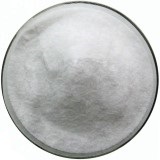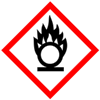Hydrous Benzoyl Peroxide SDS MSDS of Manufacturers & Exporters
Please visit of Hydrous Benzoyl Peroxide USP NF ACS BP Ph Eur EP JP IP Analytical reagent FCC Food grade Manufacturers our associates world class FDA-GMP approved, ISO-9001 Certified facility Anmol Chemicals

Hydrous Benzoyl Peroxide CAS Number 94-36-0
Benzoyl Peroxide SDS, Safety Data Sheet
MSDS, Material Safety Data Sheet 10-Aug-22
1. Product & Company Identification
Product Name & Other Names: ;Benzoyl Peroxide or Dibenzoyl peroxide. Hydrous Benzoyl Peroxide.
CAS No.: 94-36-0
EINECS EC Number: 202-327-6
Molecular Weight: 242.23
Chemical Formula: (C6H5CO)2O2
Relevant uses and uses advised against (if any): Laboratory and Industrial Use.
Supplier: As per letterhead.
2. Hazards Identification
GHS, Globally Harmonized System Classification in accordance with 29 CFR 1910
Classification according to Regulation (EC) No 1272/2008
Organic peroxides (Type C), H242
Skin sensitization (Category 1), H317
Eye irritation (Category 2), H319
Hazardous to aquatic environment (Category 3), H402
Labeling according to GHS & Regulation (EC) No 1272/2008
GHS Label Elements

Oxidizing Solid |
GHS Label Elements

Irritant |
Signal Word: Danger
Hazard Statements:
H242 - Heating may cause a fire.
H317 - May cause an allergic skin reaction
H319 - Causes serious eye irritation
H402 - Harmful to aquatic life.
Precautionary Statements - Prevention
P210: Keep away from heat/sparks/open flames/hot surfaces. - No smoking.
P220: Keep/Store away from clothing/combustible materials
P221: Take any precaution to avoid mixing with combustibles
P261: Avoid breathing dust.
P234: Keep only in original container.
P264: Wash face, hands and any exposed skin thoroughly after handling
P270: Do not eat, drink or smoke when using this product
P271: Use only outdoors or in a well-ventilated area
P273: Avoid release to the environment.
P280: Wear protective gloves/ protective clothing/ eye protection/ face protection.
Precautionary Statements - Response
P301 + P312: IF SWALLOWED: Call a POISON CENTER or doctor if you feel unwell.
P302 + P352: IF ON SKIN: Wash with plenty of water.
P304 + P341: IF INHALED: If breathing is difficult, remove to fresh air and keep at rest in a position comfortable for breathing.
P305 + P351 + P338: IF IN EYES: Rinse cautiously with water for several minutes. Remove contact lenses, if present and easy to do. Continue rinsing.
P314: Get Medical advice/attention if you feel unwell.
P330: If swallowed, rinse mouth.
P333 + P313: If skin irritation or rash occurs: Get medical advice/ attention.
P337 + P313: If eye irritation persists: Get medical advice/ attention
P342 + P311: If experiencing respiratory symptoms: Call a POISON CENTER or doctor.
P362: Take off contaminated clothing and wash before reuse.
P370 + P378: In case of fire: Use water for extinction
Precautionary Statements - Storage
P402: Store in a dry place.
P403 + P233 - Store in a well-ventilated place. Keep container tightly closed
P501: Dispose of contents/container in accordance with local, regional, national, international regulations.
Supplemental Hazard information (EU)
EUH001 Explosive when dry.
3. Composition/Information on Ingredients
Product Name & Other Names: Benzoyl Peroxide or Dibenzoyl peroxide. Hydrous Benzoyl Peroxide.
CAS No.: 94-36-0
EINECS EC Number: 202-327-6
4. First Aid Measures
Always seek medical attention after first aid measures are provided.
Inhalation: Remove to fresh air. If not breathing, give artificial respiration. If breathing is difficult, give oxygen. Get medical attention.
Ingestion: If swallowed, do not induce vomiting. Give large quantities of water. Never give anything by mouth to an unconscious person. Get medical attention immediately.
Skin Contact: In case of contact, immediately flush skin with plenty of water for at least 15 minutes while removing contaminated clothing and shoes. Cover the irritated skin with an emollient. Cold water may be used. Wash clothing & shoes before reuse. Get medical attention.
Eye Contact: Check for and remove any contact lenses. In case of contact, immediately flush eyes with plenty of water for at least 15 minutes. Cold water may be used. Get medical attention.
5. Fire Fighting Measures
Fire: Not combustible, but substance is a strong oxidizer and its heat of reaction with reducing agents or combustibles may cause ignition. Heating or contact with water releases oxygen which may intensify combustion in an existing fire. It is explosive when dry.
Explosion: An explosion hazard when mixed with finely powdered organic matter, metal powder, or reducing agents.
Special hazards arising from the substance or mixture: Carbon oxides and fumes.
Fire Extinguishing Media: Use water spray, alcohol-resistant foam, dry chemical, or carbon dioxide. Use means suitable for extinguishing surrounding fire. Cool containers with flooding quantities of water until well after fire is out.
Extinguishing Media Not recommended: Avoid using solid water jet as it may scatter the fire.
Special Information: In the event of a fire, wear full protective clothing and NIOSH-approved self-contained breathing apparatus with full face piece operated in the pressure demand or other positive pressure mode. At high temperatures under fire conditions, it may produce toxic or irritating fumes. Fire-extinguishing work is done from the windward and the suitable fire-extinguishing method according to the surrounding situation is used.
6. Accidental Release Measures
Personal precautions, protective equipment, and emergency procedures: Avoid breathing dust/fumes/gas/mist/vapors/spray. Use individual protective equipment (waterproof boots, suitable protective clothing, safety glasses, etc.). Do not approach facing the wind.
Environmental precautions: Do not let the product enter drains, soil, or water sources.
Methods and materials used for containment cleanup procedures and Storage: It is an oxidizing material. Stop leak if without risk. Avoid contact with a combustible material (wood, paper, oil, clothing etc.). Keep the substance damp using water spray. Do not touch spilled material. Prevent entry into sewers. Eliminate all ignition sources. Avoid penetration into waterways, sewers, soil, or groundwater.
7. Handling and Storage
Precautions for safe handling: Apply according to good manufacturing and industrial hygiene practices. Ensure proper ventilation. Wash thoroughly after handling. Do not drink, eat, or smoke while handling. Avoid contact with skin, eyes, and clothing. Minimize dust generation. Avoid breathing dust/fumes/gas/mist/vapors/spray. Keep container tightly closed. Avoid ingestion and inhalation. Use individual protective equipment (waterproof boots, suitable protective clothing, safety glasses, etc.).
Conditions for safe storage, including any incompatibilities: Store in cool, dry, and ventilated area away from heat sources and protected from sunlight in tightly closed original container. Keep air contact to a minimum. Do not leave the material container open. Store protected from heat, sparks and ignition sources and incompatible materials. Avoid contact with skin and eyes. Avoid inhalation of dust/mist/vapor. Do not store with incompatible materials like reducing agents, organic material, water, and powdered metals especially aluminum, acids, bases, halides, oxidizing agents, combustible materials. Avoid breathing dust. Handle product only in closed system or provide appropriate exhaust ventilation at machinery. Organic peroxides and self-reacting hazardous materials. Recommended storage temperature 2C - 8C.
8. Exposure Controls/Personal Protection
Airborne Exposure Limits: Contains no substances with occupational exposure limit values.
Ventilation System: A system of local and/or general exhaust is recommended to keep employee exposures below the Airborne Exposure Limits.
Personal Respirators (NIOSH Approved): For conditions of use where exposure to dust or mist is apparent and engineering controls are not feasible, a particulate respirator (NIOSH type N95 or better filters) may be worn.
Skin Protection: Wear protective gloves and clean body-covering clothing.
Eye Protection: Use chemical safety goggles. Maintain eye wash fountain and quick-drench facilities in work area.
Other Control Measures: Maintain good housekeeping in work area. Handle in accordance with good industrial hygiene and safety practice. Wash hands after handling.
9. Physical and Chemical Properties
Appearance: Solid
Odor: Bitter almond-like
Odor threshold: Not available.
pH: Not available.
Relative density: 0.53
Melting Point: 103C - 104C
Initial boiling point and boiling range: Not available.
Flash point: Not available.
Auto-ignition temperature: 80C
Decomposition temperature: >70C.
Upper/lower flammability or explosive limits: No information found.
Vapor pressure: No information found.
Vapor density: No information found.
Evaporation rate: No information found.
Flammability (solid, gas): No information found.
Partition coefficient: n-octanol/water: No information found.
Solubility: Practically insoluble in water
Viscosity: No information found.
10. Stability and Reactivity
Stability: Stable under recommended conditions of use and storage.
Hazardous Decomposition Products: Burning may produce Carbon oxide. Oxygen is released which supports combustion.
Hazardous Polymerization: Will not occur
Incompatibilities: Reducing agents, organic material, water, and powdered metals, especially aluminum. Acids, Bases, Halides, Oxidizing agents, Strong reducing agents, Combustible materials.
Conditions to Avoid: Combustible materials and incompatibles. Heat, flames, and sparks.
11. Toxicological Information
Oral rat LD50: 7710 mg/kg
LC50 rat: > 24.3 mg/l; 4 h
Carcinogenicity: IARC: 3 - Group 3: Not classifiable as to its carcinogenicity to humans (Benzoyl peroxide).
Mutagenic Effects: No information found.
Developmental Toxicity: No information found.
Reproductive Effects: No information found.
12. Ecological Information
Toxicity to fish LC50: No information found.
Mobility: No information found.
Persistence and degradability: This substance/mixture contains no components considered to be either persistent, bioaccumulative and toxic (PBT), or very persistent and very bioaccumulative (vPvB) at levels of 0.1% or higher.
13. Disposal Considerations
Whatever cannot be saved for recovery or recycling should be handled as hazardous waste and sent to a RCRA approved waste facility.
14. Transport Information
Land Transport DOT USA, TDG Canada and ADR/RID Europe
Proper Shipping Name: ORGANIC PEROXIDE TYPE C, SOLID (DIBENZOYL PEROXIDE)
Hazard Class: 5.2; UN/NA: UN3104
Sea Transport I.M.O/IMDG & Air Transport ICAO/IATA
Proper Shipping Name: ORGANIC PEROXIDE TYPE C, SOLID (DIBENZOYL PEROXIDE)
Hazard Class: 5.2; UN/NA: UN3104
15. Regulatory Information
USA:
California Proposition 65: Not listed.
SARA 311/312 Hazards: See section 2.
Section 16 - Additional Information
DISCLAIMER: The information and recommendations set forth herein (hereinafter "Information") are presented in good faith and believed correct as of the date hereof. It is compiled from various sources, and it is not necessarily all inclusive nor fully adequate in every circumstance. In addition, these suggestions should not be confused with nor followed in violation of applicable laws, regulations, rules, or insurance requirements applicable. This SDS MSDS sheet is intended only as a guide to the appropriate precautionary handling of the material by a professionally trained person using this product. Individuals receiving the information must exercise their independent judgment in determining its appropriateness for a particular purpose. This shall not constitute a guarantee for any specific product features and shall not establish a legally valid contractual relationship. In no case shall our company be liable to loss or damages by the product user. Specifications of Hydrous Benzoyl Peroxide BP Ph Eur EP JP USP NF IP ACS Analytical Reagent FCC Food grade Manufacturers |






